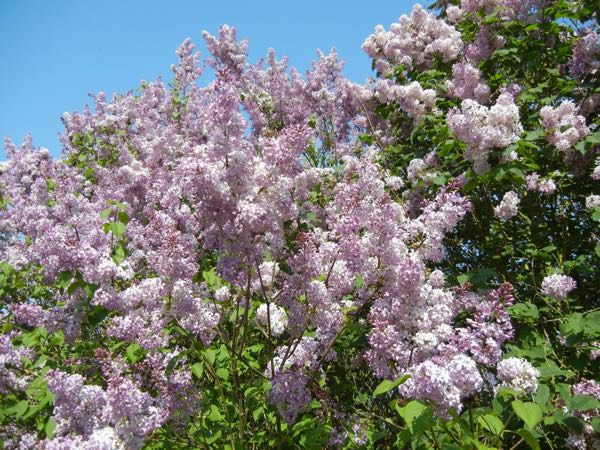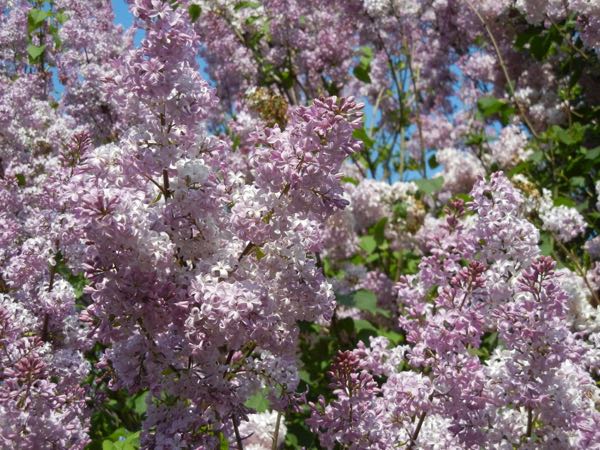Syringa x hyacinthiflora ‘Asessippi’: A Fragrant and Early Flowering Lilac
Syringa x hyacinthiflora ‘Asessippi’ is a delightful cultivar of Lilac known for its early and profuse flowering. As a member of the Oleaceae family, this upright deciduous shrub adds beauty and fragrance to gardens and landscapes. Also referred to as Syringa ‘Asessippi’ or Early Flowering Lilac ‘Asessippi’, it stands out for its remarkable qualities.
This Lilac hybrid displays an impressive growth habit, reaching a height of about 12 feet or 3.6 meters. With its upright and sturdy structure, Syringa x hyacinthiflora ‘Asessippi’ creates an attractive focal point in the landscape. The flowers, arranged in panicles, consist of delicate, four-petaled blooms. Their enchanting purple color adds a touch of elegance and charm to any setting.
Early Flowering and Fragrance: One of the most notable features of Syringa x hyacinthiflora ‘Asessippi’ is its early blooming period. This cultivar flowers ahead of many other Lilac species, providing a burst of color and fragrance when other plants are still awakening from winter dormancy. The panicles of purple flowers create a visually stunning display, enticing both the eyes and the nose. The blooms emit a strong, sweet fragrance that permeates the air, creating a delightful sensory experience.
Disease Resistance and Hardy Nature: Syringa x hyacinthiflora ‘Asessippi’ boasts not only its early flowering but also its increased disease resistance compared to other Lilac varieties. This attribute adds to its desirability, as it reduces the risk of common diseases that can affect Lilacs. With proper care, this cultivar can thrive and continue to enchant gardeners for years to come.

Cultivation of Syringa x hyacinthiflora ‘Asessippi’:
To successfully cultivate Syringa x hyacinthiflora ‘Asessippi’, consider the following guidelines:
Light Requirements: This Lilac variety thrives in full sun, although it can tolerate partial shade. However, for optimal flowering and overall performance, providing ample sunlight is recommended.
Soil Conditions: Plant Syringa x hyacinthiflora ‘Asessippi’ in moist, well-drained soil that is organically rich and humus-rich. The addition of organic matter to the soil during planting helps create a favorable environment for the shrub’s growth and development.
Propagation: This Lilac cultivar can be propagated through softwood cuttings or layering. Softwood cuttings taken in early summer or layering during the growing season can both yield successful results.
Pruning: Prune Syringa x hyacinthiflora ‘Asessippi’ immediately after flowering is complete. This timing allows the shrub to set new buds for the following year’s blooms. Care should be taken to avoid excessive pruning, as this can impact the flower production.
Pest and Deer Resistance: While Syringa x hyacinthiflora ‘Asessippi’ may attract butterflies and hummingbirds with its fragrant blooms, it is considered deer-resistant. However, gardeners should remain vigilant for potential issues such as leaf-mining moths or thrips, which can occasionally affect Lilacs.

Embrace the beauty and fragrance of Syringa x hyacinthiflora ‘Asessippi’ in your garden. With its early and abundant flowering, disease resistance, and enchanting fragrance, this Lilac cultivar will surely enhance the atmosphere and delight the senses. Enjoy the sight and scent of its purple blooms, bringing a touch of elegance and charm to your outdoor space.
Also, read about Syringa tomentella or Syringa vulgaris ‘Madame Lemoine’ or Syringa x hyacinthiflora ‘Buffon’



